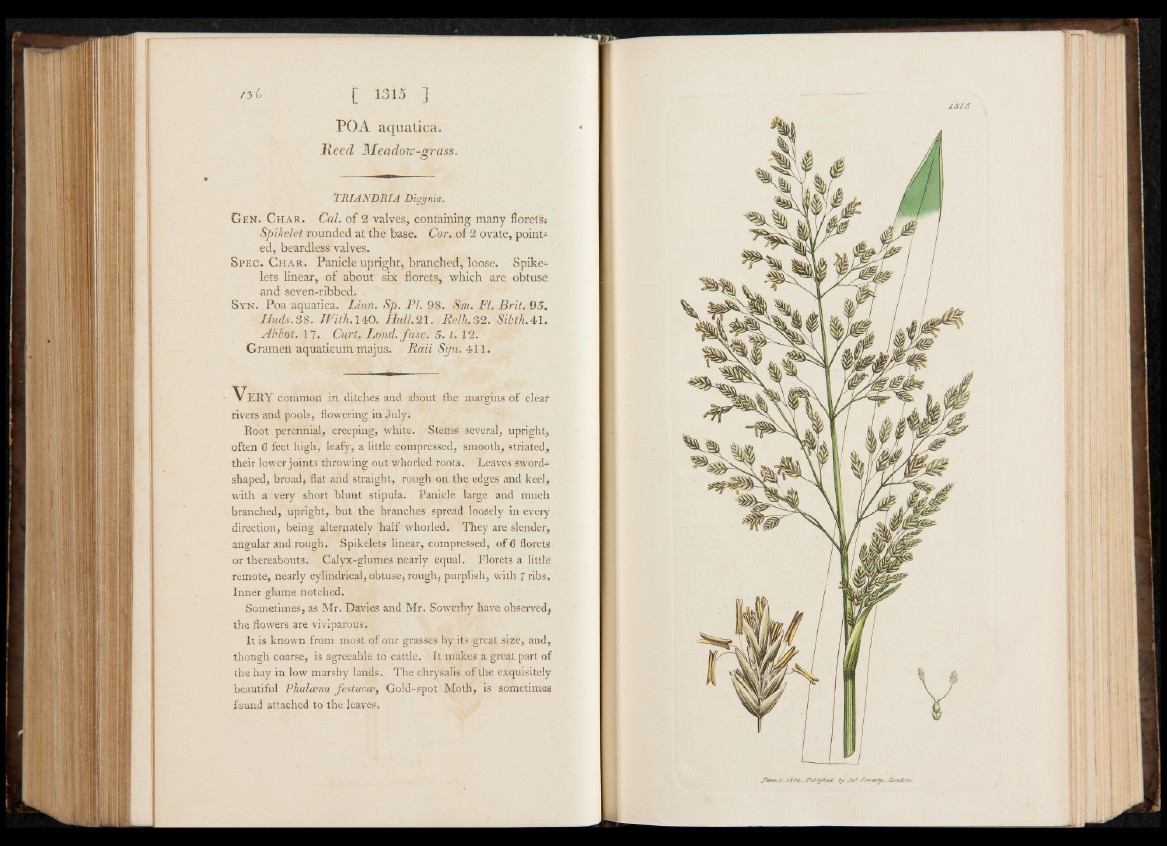
POA aquatica.
Heed Meadow-gi'ass.
TRIANDRIA Digynia.
G en. Char. Cal. of 2 valves, containing many floret^
Spikelet rounded at the base. Cor. of 2 ovate, point*
ed, beardless valves.
Spec. C har. Panicle upright, branched, loose. Spike*
lets linear, o f about six florets, w hich are obtuse
and seven-ribbed.
Syn. Poa aquatica. Linn. Sp. PL 98. Sm. FI. Brit. 95.
Hud?.38. With. 140. Hull.2 1 . ReIh.32. Sibth.41.
M lk t . 17. Curt. Bond. fasc . 5. t. 12.
Gramen aquaticum majus. Rati Syn. 411.
V e r y common in ditches and about the margins of clear
rivers and pools, flowering in July;
Root perennial, creeping, white. Stems several, upright,
often 6 feet high, leafy, a little compressed, smooth, striated,
their lower joints throwing out whorled roots. Leaves sword*
shaped, broad, flat and straight, rough on the edges and keel,
with a very short blunt stipula. Panicle large and much
branched, upright, but the branches spread loosely in every
direction, being alternately half whorled. They are slender,
angular and rough. Spikelets linear, compressed, of 6 florets
or thereabouts. Calyx-glumes nearly equal. Florets a little
remote, nearly cylindrical, obtuse, rough, purplish, with 7 ribs.
Inner glume notched.
Sometimes, as Mr. Davies and Mr. Sowerby have observed,
the flowers are viviparous.
It is known from most of our grasses by its great size, and,
though coarse, is agreeable to cattle. It makes a great part of
the hay in low marshy lands. The chrysalis of the exquisitely
beautiful Pkalcena festucce, Gold-spot Moth, is sometimes
found attached to the leaves.